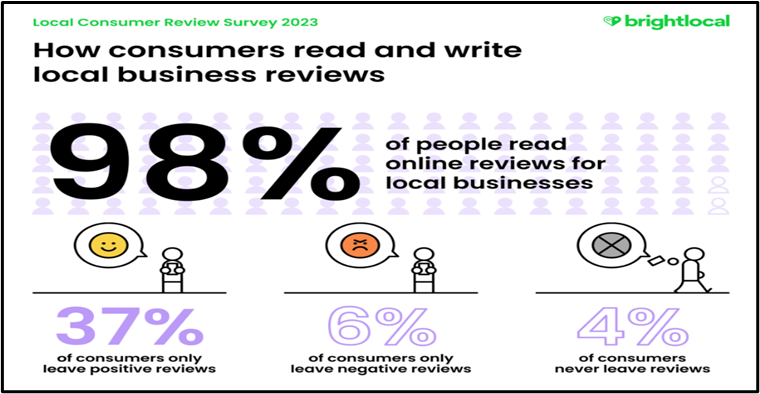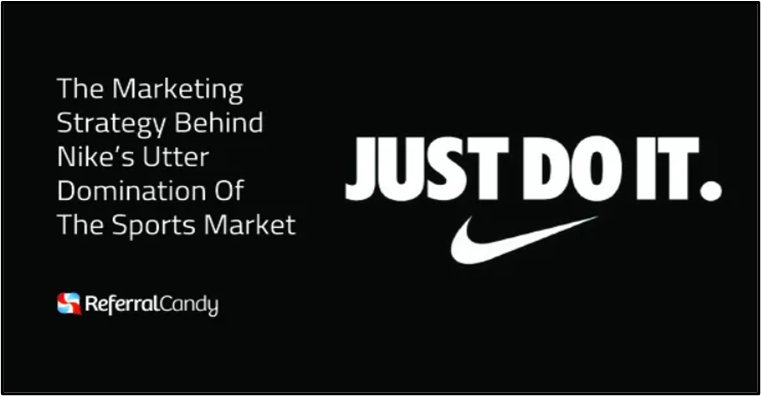Picture this: you’ve just developed a groundbreaking product, one that you believe can revolutionize your industry. You’ve poured your heart and soul into it, ensuring it’s packed with features that could change the lives of your customers.
But here’s the harsh reality – no matter how incredible your product is, it won’t sell itself. It needs a champion, a voice that can cut through the noise of the market and tell your potential customers why they should care.
That champion is your product marketing strategy… In this blog, we will embark on a journey to demystify the world of product marketing. We’ll delve into the strategies and techniques that can help your product not just survive but thrive in a crowded marketplace.
Understanding Your Product
To market your product effectively, you must first truly understand it. After all, you can’t convince others of its value if you’re not crystal clear on what makes it special. This understanding starts with a thorough examination of your product’s features and capabilities.
Take the Apple iPhone, for instance. It’s more than just a smartphone. Apple has perfected the art of defining its product’s features and unique selling points (USPs).
Whether it’s the camera quality, processing power, or the iconic design, Apple communicates these features with utmost clarity. This transparency allows potential c
Target Audience Identification
With your product’s features and capabilities in focus, the next step is to identify your target audience. Who are the individuals or organizations most likely to benefit from what your product offers? This is where creating detailed buyer personas comes into play.
By crafting these fictional but highly detailed representations of your ideal customers, you can gain a deep understanding of their needs, preferences, and pain points. This, in turn, allows you to tailor your marketing efforts to resonate with your target audience effectively.
Crafting a Compelling Value Proposition
Now that you know your product inside and out and have a firm grasp on your target audience, it’s time to craft a compelling value proposition.
Think of your value proposition as the heart of your marketing strategy. It’s the promise you make to your valued customers.
Tesla, the electric vehicle (EV) giant, goes beyond the idea of just selling cars. Their value proposition transcends the product itself. Tesla offers sustainability, cutting-edge technology, and a unique driving experience. In a world where environmental consciousness is on the rise, this value proposition resonates strongly with consumers.
Developing a marketing strategy for a new product
With a deep understanding of your product and a compelling value proposition in hand, it’s time to build a comprehensive product marketing strategy. This strategy will be the roadmap that guides your product through its journey in the market.
Setting Clear Goals and Objectives
Your product marketing strategy should begin with setting clear goals and objectives. These goals need to be specific, measurable, and time-bound. Whether your aim is to increase brand awareness, generate leads, or drive sales, these objectives will serve as a compass, ensuring your marketing efforts stay on course.
Choosing the Right Marketing Channels
The digital age has blessed us with a plethora of marketing channels. Social media, email marketing, content marketing, paid advertising – the list goes on. But not all of these channels will be equally effective for your product. Choose the ones that align with your target audience’s preferences and behaviors.
Budget Allocation and Resource Planning
A key element of your product marketing strategy is the allocation of your budget and resources. Wisely allocating your financial resources and ensuring you have the necessary personnel, tools, and technology in place is essential for executing your strategy effectively.
Marketing Strategy for New Product Launch
A successful product launch can set the tone for your product’s entire lifecycle. Let’s explore some key components of a product launch strategy.
Pre-Launch Planning
Before the curtains rise on your product launch, there’s an entire pre-launch phase to navigate. This is where you create buzz and anticipation around your product.
The tech giant Apple is a master of pre-launch secrecy and teaser campaigns, skillfully building anticipation around each product release. The iPhone 15 had 200 million social media impressions in the week leading up to its official announcement
It’s no surprise that millions eagerly await their new product announcements.
Product Launch Strategies and Tactics
The actual launch is a pivotal moment, and a well-executed launch can make all the difference. Consider using social media campaigns, email marketing, and even influencer partnerships to ensure your product launch reaches a broad audience. Crafting a compelling narrative around your product can be just as important as the product itself.
71% of consumers are most likely to shop for themselves when buying directly from social.
Post-Launch Evaluation and Adjustments
The launch is not the end; it’s just the beginning. After your product is out in the market, it’s crucial to monitor its performance and gather user feedback. Customer reviews and performance metrics can reveal what’s working and what’s not. Be prepared to make adjustments based on this valuable input.

Leveraging Existing Brand Equity with new product line
1. Incorporating the existing brand’s reputation and image
One of the key elements in successfully marketing new product lines alongside existing ones is leveraging the equity of your established brand.
When introducing new products, it’s essential to incorporate the existing brand’s reputation and image to capitalize on this trust. According to a study by Nielsen, 59% of consumers prefer to buy new products from brands they are familiar with, highlighting the significance of brand reputation.
Utilizing the existing brand’s positive associations, such as quality, reliability, and customer satisfaction, in marketing materials can instill confidence in potential customers.
2. Ensuring consistency in branding across old and new products
A study by Lucidpress found that consistent branding can increase revenue by up to 33%. To achieve this, maintaining a unified brand identity across old and new products is crucial.
The use of consistent branding elements, such as logos, colors, and messaging, across all product lines fosters brand recognition and loyalty. This data-driven approach minimizes any potential confusion among customers and strengthens the association between new products and the established brand.
3. Communicating how the new products complement the existing ones
Data-driven marketing goes beyond superficial brand consistency; it should also communicate how the new products complement the existing ones. Analyzing customer preferences and purchase history data can guide you in understanding how the two product lines can be synergized. For instance, if you offer a range of smartphones, introducing new accessories that enhance the functionality of these phones could be a strategic move.
Customer Engagement and Retention
Marketing doesn’t stop after the launch. In fact, what happens after the launch is often more critical. Keeping your customers engaged and loyal is paramount for long-term success.
Customer Onboarding
A smooth onboarding experience is vital to helping customers get the most out of your product. If your product is complex, offering tutorials, webinars, or one-on-one support can be game-changers in ensuring customers unlock its full potential.
Customer Support and Feedback
Excellent customer support is non-negotiable. Responding promptly to inquiries and resolving issues effectively not only keeps customers happy but can also turn them into brand advocates. Actively gather feedback to continuously improve your product based on user insights.
Building Loyalty Programs
Loyalty programs can be incredibly effective for retaining customers. Offering rewards, discounts, or exclusive access to new features incentivizes repeat purchases and referrals, turning customers into brand ambassadors.
Case Studies and Best Practices
Let’s look at a few real-world examples of successful product marketing strategies to illustrate how these principles can be put into action.
1. Dropbox’s Creative Referral Program
Dropbox’s ingenious referral program offered users additional free storage space for referring friends to the platform. This resulted in exponential user growth. By leveraging the power of their existing user base, Dropbox managed to acquire a substantial number of new users at a very low acquisition cost.

2. Nike’s “Just Do It” Campaign
Nike’s “Just Do It” campaign is an iconic example of brand building and resonating with a target audience. By delivering a powerful, aspirational message that encourages people to pursue their athletic goals, Nike has become a symbol of motivation and empowerment in the sports industry.

Challenges and Pitfalls
While these examples showcase the potential of effective product marketing, it’s important to acknowledge the challenges that can arise on your journey.
Common Product Marketing Challenges
Intense Competition
Most markets are fiercely competitive. It’s essential to differentiate your product and messaging to stand out.
Changing Consumer Behavior
Consumer preferences and behaviors can evolve rapidly. Staying attuned to these changes and adapting your strategy accordingly is key.
Budget Constraints
Not every company has a limitless marketing budget. Efficient resource allocation is critical.
How to Overcome Obstacles
Adapt to Market Changes
Agility is crucial. Be prepared to pivot your strategy in response to shifting market dynamics and customer preferences.
Seek Feedback and Data-Driven Insights
Continuous improvement is a core principle of effective product marketing. Actively gather feedback and use data to refine your approach.
Avoiding Costly Mistakes
Ensure Brand Alignment: All marketing campaigns should align with your brand identity and values. Avoid divisive or offensive content that could harm your brand.
Future Trends in Product Marketing
In the rapidly evolving field of product marketing, keeping an eye on emerging trends is vital to staying ahead of the curve. Here are some trends to watch out for:
Emerging Technologies and Tools: Keep an eye on emerging technologies and tools such as artificial intelligence (AI), chatbots, and advanced data analytics. These innovations can enhance your marketing efforts, offering personalized customer experiences and deeper insights into user behavior.
Changing Consumer Behavior: Consumer behavior is continually evolving, with an increasing emphasis on sustainability and ethical consumption. Consider adopting eco-friendly marketing strategies and products to cater to this shift in consumer preferences.
Adapting to the Evolving Landscape: The marketing landscape is dynamic, with new platforms and technologies constantly emerging. Be prepared to pivot and adapt your strategies to these changes, whether it’s embracing new social media platforms, incorporating video marketing, or navigating the evolving SEO landscape.
All in all…
The journey to successful product marketing is both an art and a science. It requires a deep understanding of your product, your target audience, and the ever-evolving landscape of marketing. By applying the principles outlined in this guide, you can increase your chances of “cracking the code” to successful product marketing.
For crafting and executing a winning product marketing strategy, reach out to MyMelon. Our experienced team is ready to unlock your product’s full potential and ensure success in today’s competitive marketplace. Don’t miss the opportunity to enhance your product marketing efforts—contact us today!



